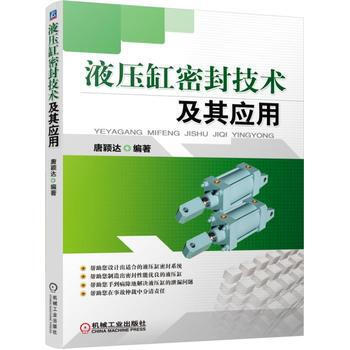![数字制造科学与技术前沿研究丛书:压电换能器设计原理 [Design Principle for Piezoelectric Transducer]](https://pic.windowsfront.com/12192434/5924249dNaf8dd608.jpg)

具体描述
内容简介
《数字制造科学与技术前沿研究丛书:压电换能器设计原理》在介绍压电材料与压电方程等基本知识的基础上,以声呐阵元、钹式换能器的结构分析与设计为典型案例,论述了压电换能器振动等效机电模型与有限元模型的建立与分析方法,并介绍了压电超声马达、压电变压器、振动能量收集器等压电换能器设计原理。《数字制造科学与技术前沿研究丛书:压电换能器设计原理》可供从事机械动力学、力学与控制、微机电系统、声呐等领域的工程设计人员、相关领域科研院所的科研人员与大专院校的高年级学生、研究生参考阅读。
内页插图
目录
1 压电材料与压电效应1.1 压电材料
1.1.1 压电单晶材料
1.1.2 压电陶瓷
1.1.3 压电高分子聚合物
1.1.4 弛豫型铁电材料
1.1.5 压电复合材料
1.2 压电材料的重要参数
1.2.1 机电耦合系数
1.2.2 介质损耗因子和电学品质因数
1.2.3 机械损耗因子和机械品质因数
1.2.4 频率常数
1.2.5 老化
1.2.6 温度稳定性和居里点
1.2.7 电退极化
1.2.8 额定动态抗张强度
1.2.9 高静态应力对材料性能的影响
1.3 压电方程
1.3.1 压电方程的推导
1.3.2 电弹常数的物理意义
1.3.3 压电晶体常数之间的关系
1.3.4 压电振子的四类边界条件
1.3.5 各种压电晶体的常数矩阵
1.3.6 压电陶瓷的机电耦合系数与品质因数讨论
1.4 压电振子的振动模式
参考文献
2 压电陶瓷典型振动模式的等效电路
2.1 机电类比
2.1.1 机械系统和电路的元件
2.1.2 单自由度机械系统和单电回路的运动方程式
2.1.3 振动稳态解各量之间关系的类比
2.2 典型的机电等效模型
2.2.1 压电陶瓷薄圆环的径向对称模式
2.2.2 电场垂直于长度方向的长度伸缩模式
2.2.3 电场平行于波传播方向的厚度剪切模式
2.2.4 电场平行于波传播方向的厚度伸缩模式
2.2.5 电场平行于长度方向的长度伸缩模式
2.2.6 薄圆片的径向振动模式
参考文献
3 Tonpilz压电换能器机电等效模型
3.1 级联理论
3.2 p个晶片级联组合系统的机电等效图
3.3 前后盖板的机电等效图
3.4 Tonpilz压电换能器的机电等效图
3.5 频率方程
参考文献
4 弯张压电换能器的结构设计与发展
4.1 弯张换能器的结构发展
4.2 钹式换能器的发展与制作工艺
4.2.1 钹式换能器的研究现状与发展
4.2.2 钹式换能器的制作工艺
4.3 弯张换能器的典型应用
4.4 弯张换能器的设计与分析方法
参考文献
5 钹式换能器的有限元分析
5.1 ANSYS软件分析方法及过程
5.1.1 基本理论
5.1.2 物理实体模型
5.1.3 有限元离散模型
5.1.4 设定问题类型并求解
5.1.5 提取结果数据,获得特性参数
5.2 钹式换能器基本电声性能分析
5.2.1 共振频率
5.2.2 振动模态
5.2.3 电导纳特性
5.2.4 发射响应和接收灵敏度
5.2.5 指向性
5.3 材料参数对换能器性能的影响规律
5.3.1 压电材料对性能的影响
5.3.2 金属材料对性能的影响
5.4 加电方式对换能器性能的影响
5.5 结构参数对性能的影响规律
5.5.1 总体尺寸对性能的影响
5.5.2 径向尺寸对性能的影响
5.5.3 PZT厚度对性能的影响
5.5.4 黄铜片厚度对性能的影响
5.5.5 空腔厚度对性能的影响
参考文献
6 欧米伽型弯张压电换能器
6.1 欧米伽换能器的结构与能量表达式
6.1.1 欧米伽换能器的结构
6.1.2 圆锥薄壳的能量表达式
6.1.3 金属圆环、顶部金属圆片及陶瓷圆片的能量表达式
6.2 欧米伽换能器谐振频率的Rayleigh-Ritz解法
6.2.1 位移振型函数
6.2.2 几何边界条件
6.2.3 谐振频率和位移振型函数待定系数的求解
6.3 理论推广与实验对比
6.4 欧米伽换能器的有限元分析
6.4.1 空腔顶部半径对性能的影响
6.4.2 空腔高度对性能的影响
6.4.3 空腔底部半径对性能的影响
6.4.4 陶瓷片厚度对性能的影响
6.4.5 金属端帽厚度对性能的影响
6.5 与钹式换能器的对比
6.5.1 有限元模型
6.5.2 导纳特性对比
6.5.3 发射与接收响应对比
参考文献
7 压电超声马达
7.1 工作原理、分类和特点
7.1.1 驻波的形成
7.1.2 行波的形成
7.1.3 压电马达的性能特点
7.2 几种典型的压电马达
7.2.1 直线型行波压电马达
7.2.2 环形行波压电马达
7.2.3 多模态复合驻波型压电马达
7.3 压电马达的其他应用
7.3.1 精密机械
7.3.2 微机电系统
7.3.3 航空航天
7.4 压电马达的研究方向
7.4.1 基础理论与建模
7.4.2 功能材料
7.4.3 驱动与控制技术
参考文献
8 压电变压器
8.1 压电变压器的应用与发展
8.2 压电变压器工作原理
8.3 压电变压器的分类
8.3.1 厚度振动模式压电变压器
8.3.2 径向振动模式压电变压器
8.3.3 剪切振动模式压电变压器
8.4 等效电路及机电特性
参考文献
9 压电能量收集器
9.1 基于机电转换的能量收集技术
9.2 压电俘能结构的构成
9.2.1 压电材料
9.2.2 压电振子振动模式
9.2.3 其他结构形式
9.3 能量收集和存储电路
9.3.1 能量收集接口电路
9.3.2 能量收集存储技术
9.4 压电悬臂梁发电结构的理论模型
9.4.1 压电单晶片(Unimorph)悬臂梁结构动力学模型
9.4.2 压电双晶片(Bimorph)悬臂梁结构动力学模型
9.4.3 压电单晶片悬臂梁的数值分析
参考文献
前言/序言
压电换能器是利用材料的压电效应工作的一切装置,该称谓沿用了声呐中的水声装置所用的术语。自发现压电效应以来,其第一个应用领域就是探测水下目标。在第二次世界大战中,潜艇因其隐蔽性而成海战利器,探测水下目标就成为迫切需要解决的军事问题。声场是水下最重要的、可用的物理场。主动发射声波,并通过水下目标的反射声波判断是否存在水下目标的军事需求,迫切需要压电材料。天然的石英成为首选材料,将交变电流施加在其上,产生交变位移驱动海水,在水介质中形成周期变化的微幅压力场,即声波。从现代声呐技术的角度来看,这种最原始的“主动声呐”仅仅是一种完成电能与压力转换的单个压电换能器,产生的声波不具备指向性;为了增加空间增益,需要将多个压电换能器以某种形式组成阵列,成为水声基阵,如直线排列为线列阵,按照一定安装形状排列为共性阵,最简单的情形就是两个压电换能器组成的偶极子,它是分析基阵性能的基础。所以在声呐领域,由多个压电换能器组成的水声基阵称为换能器基阵,则相应地将单个压电换能器称为换能器阵元,有时候为了简便起见干脆将两者都简称为换能器。现代声呐进一步通过信号处理技术提高了时间增益,如此一来,使得换能器基阵仅仅是声呐中的一部分,是声呐的最基本的前端部分,是完成感应的水声装置,这也是压电换能器概念中一种狭义的内涵。为了增加隐蔽性,当今大部分声呐只是通过检测目标产生的噪声来判别目标,即被动检测目标而不主张主动探测目标。无论如何演变,压电换能器的设计至今仍是声呐设计中最重要且最基本的研究内容。沿用声呐中换能器术语表示广义的压电装置,是压电换能器概念的另一个内涵。随着压电效应的深入研究,为取代昂贵的天然石英,各种压电材料被陆续开发出来,这进一步促进了压电技术的应用。众所周知的B超就是一个典型,其物理与数学本质与声呐是完全相同的。除此之外,用于微量控制的压电驱动器,用于测量的压电传感器如加速度计,用于缩小装备体积的压电变压器、压电扬声器,以及现代开发的、本质上也是用于控制的发动机压电喷嘴、压电喷墨打印,正在开发的厘米级尺度的微型压电马达,微能量供电的环境振动能量收集器等,都采用了材料的压电能量转换方式,故我们将其统称为压电换能器。可以看出,除了需要高功率驱动的声呐换能器阵元或换能器基阵体积较大之外,几乎所有的压电换能器都具备体积微小的特征,尤其重要的是,由于在压电材料中,能量转换是在机械运动能量与电能之间进行的,所以所有压电换能器都是以机电耦合的方式进行工作的,因而除了狭义上的声呐压电换能器,广义上的压电换能器都属于微机电系统(MEMS)中的一族,B超自然也在其中。
由于压电换能器如此重要,且具有技术应用和技术发展空间,所以数字制造丛书将压电换能器设计原理列入出版计划。简而言之,原因有二:其一是压电换能器代表了一类MEMS装置,在先进的数字制造技术中,压电换能器可以作为一类精密测量与精密控制的工具,数字机床的精密控制就是一个例子;其二是压电换能器作为一类MEMS的产品,其发展与先进制造技术有着千丝万缕的联系。微型压电马达、相机的聚焦控制器、结构表面形状的压电控制器、弹药的引信,以及压电声表面器件等,这些均是未来可占据市场的创新性压电产品。除了压电材料的配方与精细加工之外,集成后的产品也离不开先进的制造技术。可以预见,随着压电换能器技术的开发与运用,它与先进的数字制造技术必定会产生密切的关系。
压电技术既有成熟的产品,也有开发的潜力,其产品设计的共同基础是压电材料的性能与等效的压电动力学分析。迄今为止,陆续出版了不少压电传感器设计的书籍,研究期刊上也发表了诸多的研究文献。作者之所以从事该类研究并撰写设计原理一书,是考虑到正在发展的现代分析计算技术,可以为包括声呐在内的压电换能器设计提供比较精确的开发设计工具;压电换能器设计的共同目标是提高压电效应指标,目前不仅压电材料的种类丰富且性能在提高,压电换能器的结构也在变化,利用换能器结构设计进一步提高本该属于压电材料特性的压电效应,将给分析设计带来新的特点。在有限的篇幅内论述所有的压电换能器设计问题是没必要也不可能的,本书成书过程中,有倾向性地选择并论述了作者认为重要的、有代表性的换能器的设计原理。
用户评价
在我看来,一本能够深入探讨“设计原理”的书籍,不仅仅是在传授知识,更是在培养一种解决问题的思维模式。《压电换能器设计原理》这本书,作为“数字制造科学与技术前沿研究丛书”的一员,无疑肩负着这样的使命。我对压电效应所带来的,将机械力转换为电信号,或将电信号转化为机械形变的神奇能力,一直抱有浓厚的兴趣。 我非常期待书中能够从压电材料的本构关系出发,详细阐述压电效应的物理根源。这可能包括对压电张量、介电张量、弹性张量之间耦合关系的深入剖析。书中是否会探讨不同压电材料,如PZT(锆钛酸铅)、PVDF(聚偏氟乙烯)等,它们在微观结构、晶体取向、畴壁运动等方面存在的差异,以及这些差异如何影响宏观的压电性能? 在换能器的设计方面,我期待书中能够系统地介绍各种压电换能器的结构类型,例如单层、多层堆叠、压电梁、压电圆盘等,并分析它们各自的工作原理、优缺点和适用的工作模式。书中是否会提供清晰的设计公式、计算方法,以及如何进行参数优化以满足特定应用需求(如高频响应、大位移输出、高能量密度等)? 而且,结合“数字制造”的背景,我非常希望书中能够体现出先进数字技术在压电换能器设计与制造中的应用。例如,利用多物理场仿真软件(如COMSOL、ANSYS)进行精确的数值模拟,预测换能器的动态特性、应力分布和能量损耗,并辅助设计优化;或者利用3D打印等增材制造技术,实现复杂形状和功能集成的压电结构。 书中对于压电换能器性能关键指标的深入解读,将是我重点关注的内容。例如,如何理解和量化换能器的灵敏度、带宽、功率容量、能量转换效率以及长期稳定性?我希望能够学习到如何通过结构设计、材料选择以及驱动电路的匹配,来有效地提升这些性能指标。 除了理论分析,我更看重书中是否提供了丰富的工程案例和实际应用分析。例如,在医疗超声诊断设备中,压电换能器是如何实现高分辨率成像的?在工业振动监测系统中,如何设计耐用且高灵敏度的压电传感器?在能量收集领域,如何设计高效的压电能量收集装置? 我还希望书中能够探讨压电换能器的可靠性问题,包括材料的疲劳寿命、环境适应性以及封装技术等。这些都是确保压电换能器在实际工程中能够长期稳定运行的关键因素。 对于热衷于前沿科技的读者,书中对压电换能器领域最新研究进展和发展趋势的介绍,如新型压电材料、纳米压电器件、压电集成器件等,将极具吸引力。 总而言之,《压电换能器设计原理》这本书,我预感它将是一本集理论深度、工程实践、前沿技术于一体的宝贵参考书,它将帮助我深入理解压电换能器的设计奥秘,并为我在相关领域的创新实践提供坚实的理论指导。
评分我对《压电换能器设计原理》这本书的期待,源于我对能够将机械世界的“触感”转化为电子世界“信号”的技术的无限好奇。压电效应所赋予的这种独特能力,在现代科技的诸多领域都扮演着至关重要的角色。我希望这本书能够为我揭示这一领域的设计精髓。 我非常期待书中能够从压电材料的基础理论出发,深入浅出地阐述压电效应的物理机制。这包括对压电张量、介电张量、弹性张量等本构关系的详细解释,以及这些微观属性如何体现在宏观的换能器性能上。对于不同类型的压电材料,如PZT、PVDF、PMN-PT等,书中是否会对其性能特点、制备工艺以及在不同应用场景下的适用性进行详尽的比较和分析? 在换能器的设计方面,我期待书中能够系统地介绍各种压电换能器的结构形式,例如单层、多层堆叠、压电梁、压电圆盘等,并详细分析它们的工作原理、设计公式以及性能特点。书中是否会提供一套完整的压电换能器设计流程,包括如何根据应用需求(如驱动力、位移、频率响应、功率输出等)来选择合适的结构和材料,并进行初步的设计计算? 而且,结合“数字制造”的背景,我非常希望书中能够深入探讨如何利用先进的数字设计工具和制造技术来优化压电换能器的设计和制造。例如,利用有限元分析(FEA)软件进行多物理场仿真,预测换能器的动态行为、应力分布和能量损耗,并进行结构优化;或者利用3D打印等增材制造技术来制备具有复杂几何形状或功能集成的压电结构。 书中对于压电换能器性能关键指标的阐述,将是我重点关注的内容。例如,如何理解和量化换能器的灵敏度、带宽、功率容量、能量转换效率以及长期稳定性?我希望能学习到如何通过结构设计、材料选择以及驱动电路的匹配,来有效地提升这些性能指标。 除了理论推导,我更看重书中是否提供了丰富的工程案例和实际应用分析。例如,在医疗诊断领域,压电换能器是如何实现高分辨率成像的?在工业自动化领域,如何设计耐高温、高压、高可靠性的压电传感器和执行器?在能量收集领域,如何设计高效的压电能量收集装置? 我还希望书中能够探讨压电换能器的可靠性问题,包括材料的疲劳寿命、环境适应性以及封装技术等。这些都是确保压电换能器在实际工程中能够长期稳定运行的关键因素。 对于热衷于前沿科技的读者,书中对压电换能器领域最新研究进展和发展趋势的介绍,如新型压电材料、纳米压电器件、压电集成器件等,将极具吸引力。 总而言之,《压电换能器设计原理》这本书,我预感它将是一本集理论深度、工程实践、前沿技术于一体的宝贵参考书,它将帮助我深入理解压电换能器的设计奥秘,并为我在相关领域的创新实践提供坚实的理论指导。
评分《压电换能器设计原理》这本书,从名字上就能感受到它所承载的分量。我一直对那些能够将机械能转化为电能,或者反过来,将电能转化为机械能的材料和器件充满好奇。压电效应就是其中最令人着迷的一种现象,它在现代科技中无处不在,从手机里的扬声器,到医学上的超声波探头,再到精密仪器中的微定位器,都离不开压电换能器的身影。 我非常期待书中能够深入浅出地解释压电换能器的工作原理,不仅仅是宏观的电荷产生和位移变化,更希望能触及到材料微观层面,例如晶体结构、电畴翻转等。从材料科学的角度,书中是否会详细介绍不同压电材料的特性,比如PZT(锆钛酸铅)、PVDF(聚偏氟乙烯)、PMN-PT(镁镍钴-钛酸铅)等,以及它们在不同应用场景下的优劣势分析? 在设计方面,我猜想书中会重点阐述各种压电换能器的结构类型,比如单层、多层、堆叠式、梁式、环式等。以及如何根据具体的应用需求,比如驱动力、位移幅度、响应频率、功率密度等,来选择最合适的结构形式。书中是否还会提供一些实用的设计公式和计算方法,帮助读者进行初步的设计和评估? 而且,作为一套“数字制造科学与技术前沿研究丛书”中的一本,我非常期待书中能够体现出先进制造技术在压电换能器设计中的应用。例如,是否会介绍如何利用3D打印技术制造复杂形状的压电换能器,或者如何利用微纳加工技术制造微型化、集成化的压电器件?这些都将是极具价值的内容。 我尤其关注书中对于压电换能器性能优化的讨论。如何通过调整材料配方、改变几何结构、优化电极设计、甚至施加预应力等手段,来提高换能器的灵敏度、效率、带宽、可靠性等关键性能指标?这些都是工程师在实际设计中面临的核心问题。 除了理论分析,我更希望能看到书中提供大量的工程案例和实际应用。例如,在医疗超声领域,如何设计高精度、高分辨率的压电换能器?在工业自动化领域,如何设计耐高温、高压、高可靠性的压电传感器和执行器? 我猜测书中也会涉及压电换能器与驱动电路、信号处理电路的匹配设计。一个性能优异的压电换能器,如果搭配不当的电子系统,其整体性能也会大打折扣。 对于研究者来说,关于压电换能器性能的测试方法、标准以及失效分析,将是至关重要的参考资料。这些内容能帮助我们客观地评估设计效果,并为进一步的改进提供依据。 总而言之,《压电换能器设计原理》这本书,我预感它将是一本集理论、实践、前沿技术于一体的宝贵著作,它将帮助我更深入地理解压电换能器的奥秘,并为我在相关领域的研究和开发提供强大的支持。 The title, "Design Principle for Piezoelectric Transducer," immediately signals a focus on the practical application of scientific knowledge. My interest lies in understanding not just what piezoelectricity is, but how it is harnessed and engineered into functional devices. I anticipate the book will provide a comprehensive overview of the fundamental physical phenomena underpinning piezoelectric transducers, starting from the atomic and molecular levels. I am particularly eager to explore the detailed discussions on material science aspects. This would ideally include a comparative analysis of various piezoelectric materials, their distinct properties such as piezoelectric coefficients (d33, d31, etc.), dielectric constants, electromechanical coupling factors, Curie temperatures, and their respective advantages and disadvantages for different applications. The book might also touch upon the processing of these materials, from powder synthesis to sintering, and how processing parameters influence final performance. From a design perspective, I expect the book to meticulously detail different transducer configurations, such as Langevin transducers, unimorphs, bimorphs, and stack actuators. For each configuration, I hope to find explanations of their operating mechanisms, typical performance characteristics, and the mathematical models used to predict their behavior. This would be crucial for understanding how to select or design a transducer for a specific task. Furthermore, given the "Digital Manufacturing" context of the book series, I am keenly interested in how modern digital design and manufacturing technologies are integrated into piezoelectric transducer development. This could involve discussions on computational modeling and simulation techniques (like FEA), rapid prototyping using additive manufacturing, and the design for manufacturability principles applied to complex piezoelectric structures. The book should also address the critical aspect of impedance matching and power transfer. A transducer's efficiency is heavily dependent on how well it is matched to the electrical source or load. I hope to find detailed guidance on calculating and achieving optimal impedance matching for various operating conditions, especially in energy harvesting applications. Moreover, the book is likely to cover the practical challenges encountered in transducer design and fabrication. This might include topics like electrode adhesion, material fatigue, aging effects, and methods for packaging and protection to ensure long-term reliability and performance in harsh environments. Real-world case studies illustrating how these challenges are overcome would be highly beneficial. I also anticipate the book will explore the advanced applications of piezoelectric transducers, moving beyond conventional uses. This could include their role in microfluidics, medical diagnostics (beyond standard ultrasound), actuators for precision positioning systems, and their integration into smart materials and structures. The book's comprehensiveness would be enhanced by sections dedicated to testing and characterization methodologies. Understanding how to measure key performance parameters like resonant frequency, quality factor, sensitivity, and power output is essential for validating designs and for quality control. Lastly, I hope the book will provide insights into future trends and research directions in the field of piezoelectric transducers. This could include advancements in lead-free piezoelectric materials, nanoscale piezoelectric devices, and novel applications driven by ongoing research and development.
评分这本书《压电换能器设计原理》所描绘的领域,在我看来,是连接微观物质特性与宏观工程应用的一座关键桥梁。压电效应的独特性,使得压电换能器在传感、驱动、能量转换等众多领域发挥着不可替代的作用。我期待这本书能带领我深入探究这一奇妙技术的“设计哲学”。 我非常希望书中能从基础的物理原理出发,系统地介绍压电效应的来源,以及不同压电材料(如压电陶瓷、压电聚合物、单晶压电材料)的性能差异。例如,压电系数(d33、d31等)、介电常数、机电耦合系数等关键参数是如何确定的,又对换能器的性能产生怎样的影响?书中是否会深入探讨材料的晶体结构、畴壁行为等微观因素? 在换能器的设计方面,我期待书中能够提供一套系统性的设计方法论。这可能包括对不同换能器结构(如压电片、压电梁、压电叠堆、压电管等)的详细解析,分析它们的驱动原理、负载特性以及各自的优势和局限性。书中是否会提供相关的设计公式、计算流程,以及如何进行参数优化以达到特定性能指标? 而且,考虑到“数字制造”的背景,我非常希望书中能够体现出先进数字技术在压电换能器设计与制造中的应用。例如,如何利用多物理场仿真软件(如COMSOL、ANSYS)来精确预测换能器的静态和动态响应,优化结构设计,并评估其在实际工况下的表现?或者,3D打印等增材制造技术如何为压电换能器设计带来新的可能? 书中对于压电换能器性能指标的解读,将是我重点关注的内容。例如,如何理解和评估换能器的灵敏度、分辨率、响应速度、功率效率、以及在不同频率下的工作特性?我希望能够学到如何通过合理的结构设计和材料选择来优化这些指标,以满足不同应用的需求。 除了理论分析,我更看重书中是否提供了丰富的工程案例和实际应用。例如,在医疗超声诊断设备中,压电换能器是如何实现高分辨率成像的?在工业振动监测系统中,如何设计耐用且高灵敏度的压电传感器?在能量收集领域,如何设计高效的压电能量收集装置? 我还希望书中能够探讨压电换能器的可靠性问题,包括材料的疲劳寿命、环境适应性以及封装技术等。这些都是确保压电换能器在实际工程中能够长期稳定运行的关键因素。 对于热衷于前沿科技的读者,书中对压电换能器领域最新研究进展和发展趋势的介绍,如新型压电材料、纳米压电器件、压电集成器件等,将极具吸引力。 总而言之,《压电换能器设计原理》这本书,我预感它将是一本集理论深度、工程实践、前沿技术于一体的宝贵参考书,它将帮助我深入理解压电换能器的设计奥秘,并为我在相关领域的创新实践提供坚实的理论指导。 My interest in "Design Principle for Piezoelectric Transducer" is fueled by the remarkable versatility of piezoelectric technology and its pervasive presence in modern innovations. This book, positioned within a series on frontier research in digital manufacturing, promises to bridge theoretical understanding with practical engineering applications, a combination I find highly valuable. I am particularly eager to delve into the fundamental material science aspects governing piezoelectric transducers. This would ideally involve a thorough exploration of the piezoelectric effect at a microscopic level, including the role of crystal structure, domain alignment, and defect chemistry in dictating macroscopic electromechanical coupling. A comparative analysis of different piezoelectric materials—ceramics, polymers, and single crystals—highlighting their distinct properties such as piezoelectric coefficients, dielectric permittivity, and Curie temperature, and their suitability for various applications, would be highly beneficial. From a design perspective, I anticipate a systematic treatment of various transducer configurations. This would likely include detailed discussions on the operating principles, mechanical-electrical analogies, and design equations for common transducer types like unimorphs, bimorphs, stack actuators, and Langevin transducers. I am keen to learn how to select the appropriate configuration and dimensions to achieve desired performance metrics like force output, displacement, resonant frequency, and efficiency. The integration of digital manufacturing techniques is a key aspect that draws me to this book. I expect to find insights into how computational tools, such as Finite Element Analysis (FEA) for multi-physics simulations, are used to predict and optimize transducer performance, explore complex geometries, and mitigate potential design flaws. The potential application of additive manufacturing (3D printing) for fabricating intricate piezoelectric structures with integrated functionalities would also be a fascinating topic. I also foresee a significant focus on transducer characterization and performance evaluation. Understanding the methodologies for measuring key parameters like impedance, frequency response, sensitivity, and power output is crucial for validating designs and ensuring product quality. I hope the book provides guidance on standard testing procedures and the interpretation of results. Moreover, the book's practical applicability would be greatly enhanced by in-depth case studies and application examples. Illustrating how piezoelectric transducers are employed in diverse fields such as medical ultrasound, automotive systems, industrial automation, and energy harvesting, and detailing the specific design challenges and solutions encountered, would be immensely insightful. The discussion on reliability and longevity of piezoelectric transducers is another area I find critical. I anticipate learning about material fatigue, environmental degradation mechanisms, and effective strategies for packaging and protection to ensure robust performance in demanding operational conditions. Finally, I hope the book will offer a glimpse into the future of piezoelectric transducer technology, perhaps discussing emerging materials, novel device concepts, and potential breakthroughs in areas like nanoscale energy harvesting or advanced actuation systems. This forward-looking perspective is vital for staying abreast of advancements in the field.
评分《压电换能器设计原理》这个书名,让我立刻联想到那些能够“感知”周围世界并与之发生互动的精密器件。压电效应所带来的,将机械形变转化为电信号,或将电信号转化为机械形变的神奇能力,是现代科技中不可或缺的一部分。我期待这本书能为我揭开这一技术领域的设计奥秘。 我非常希望书中能够从压电材料的基础理论出发,深入浅出地阐述压电效应的物理机制。这可能包括对压电张量、介电张量、弹性张量等本构关系的详细解释,以及这些微观属性如何体现在宏观的换能器性能上。书中是否会深入探讨材料的晶体结构、畴壁行为等微观因素,以及它们如何影响压电系数、介电常数、机电耦合系数等关键参数? 在换能器的设计方面,我期待书中能够系统地介绍各种压电换能器的结构类型,例如单层、多层堆叠、压电梁、压电圆盘等,并详细分析它们的工作原理、设计公式以及性能特点。书中是否会提供一套完整的压电换能器设计流程,包括如何根据应用需求(如驱动力、位移、频率响应、功率输出等)来选择合适的结构和材料,并进行初步的设计计算? 而且,考虑到“数字制造”的背景,我非常希望书中能够体现出先进数字技术在压电换能器设计与制造中的应用。例如,利用多物理场仿真软件(如COMSOL、ANSYS)进行精确的数值模拟,预测换能器的动态行为、应力分布和能量损耗,并辅助设计优化;或者利用3D打印等增材制造技术,实现复杂形状和功能集成的压电结构。 书中对于压电换能器性能关键指标的深入解读,将是我重点关注的内容。例如,如何理解和量化换能器的灵敏度、带宽、功率容量、能量转换效率以及长期稳定性?我希望能够学习到如何通过结构设计、材料选择以及驱动电路的匹配,来有效地提升这些性能指标。 除了理论分析,我更看重书中是否提供了丰富的工程案例和实际应用分析。例如,在医疗超声诊断设备中,压电换能器是如何实现高分辨率成像的?在工业振动监测系统中,如何设计耐用且高灵敏度的压电传感器?在能量收集领域,如何设计高效的压电能量收集装置? 我还希望书中能够探讨压电换能器的可靠性问题,包括材料的疲劳寿命、环境适应性以及封装技术等。这些都是确保压电换能器在实际工程中能够长期稳定运行的关键因素。 对于热衷于前沿科技的读者,书中对压电换能器领域最新研究进展和发展趋势的介绍,如新型压电材料、纳米压电器件、压电集成器件等,将极具吸引力。 总而言之,《压电换能器设计原理》这本书,我预感它将是一本集理论深度、工程实践、前沿技术于一体的宝贵参考书,它将帮助我深入理解压电换能器的设计奥秘,并为我在相关领域的创新实践提供坚实的理论指导。
评分在我看来,一本好的科技书籍,应该能够系统地梳理一个领域的知识体系,并在此基础上,指引读者窥探前沿的研究方向。《压电换能器设计原理》这本书,凭借其“数字制造科学与技术前沿研究丛书”的定位,无疑具备了这样的潜力。我一直对压电材料所展现出的神奇能力——能够高效地在机械能与电能之间相互转换——感到深深着迷。 我非常期待书中能够从材料的本构关系出发,深入剖析压电效应的物理本质。这包括对压电张量、介电张量、弹性张量的详细介绍,以及它们之间如何通过耦合产生宏观的压电响应。对于压电陶瓷的微观结构,如晶粒尺寸、晶界特性、畴结构等,书中是否会探讨它们对整体性能的影响?例如,微晶化或纳米化是否能带来性能的提升? 在换能器的设计方面,我非常希望书中能详尽介绍不同类型压电换能器的设计方法和计算模型。这可能包括压电单层、多层、压电梁、压电圆盘等结构。书中是否会提供针对不同应用场景(如传感器、驱动器、能量收集器)的设计流程和优化策略?我尤其关注如何通过结构优化来提高换能器的功率密度和能量转换效率。 而且,结合“数字制造”的时代背景,我期待书中能介绍如何利用先进的数字设计工具和制造技术来赋能压电换能器的研发。例如,利用计算机辅助工程(CAE)软件进行数值仿真,预测换能器的动态特性,并进行参数优化;或者利用增材制造(3D打印)技术来制备具有复杂几何形状或功能集成的压电器件。 我希望书中能够深入探讨压电换能器的动态响应特性,包括其频率响应、阻尼特性、非线性行为等。理解这些特性对于设计出性能稳定、可靠的换能器至关重要。书中是否会介绍如何通过设计来控制这些动态特性,例如改变换能器的质量、刚度、阻尼参数? 此外,压电换能器的可靠性和寿命也是工程应用中不可忽视的关键因素。我希望书中能够提供关于压电材料疲劳、老化机理以及失效模式的分析,并给出相应的预防和设计建议,以提高换能器的长期稳定性。 对于希望将理论知识应用于实践的读者,书中丰富的工程案例和实际应用分析将是极大的帮助。例如,在医疗器械、汽车电子、工业自动化等领域,压电换能器是如何被巧妙应用的,以及在这些应用中遇到的设计挑战和解决方案。 我还希望书中能够对压电换能器相关的先进研究方向进行展望,如压电复合材料、压电智能结构、压电纳米发电机等。这些内容将有助于读者了解该领域的最新动态,并激发新的研究灵感。 总而言之,《压电换能器设计原理》这本书,我预感它将是一部集理论深度、工程实践、前沿技术于一体的杰作。它不仅能帮助我构建起对压电换能器设计原理的全面认知,更能启发我在数字制造领域进行更深入的探索和创新。 My exploration of the "Design Principle for Piezoelectric Transducer" is driven by a fascination with how fundamental physical principles are translated into tangible technologies that shape our modern world. The ability of piezoelectric materials to convert mechanical energy into electrical energy, and vice versa, is a cornerstone of countless applications, and this book, as part of a frontier research series, promises a deep dive into its engineering. I am particularly keen to understand the material science underpinnings of piezoelectric transducers. This includes a thorough examination of the constitutive relations governing piezoelectricity, detailing the interplay between stress, strain, electric field, and electric displacement. I anticipate sections that explore the impact of material microstructure – such as grain size, crystallographic orientation, and the presence of domains – on the overall transducer performance. Insights into the processing-structure-property relationships for common piezoelectric ceramics like PZT, and perhaps emerging lead-free alternatives, would be invaluable. From a design perspective, I expect the book to offer a comprehensive catalog of transducer architectures. This would likely cover the design principles of various configurations, from simple unimorphs and bimorphs to more complex multilayer stacks and Langevin-type transducers. I hope to find detailed methodologies for calculating key performance parameters like resonant frequency, displacement amplitude, force output, and bandwidth, tailored for different operational modes and application requirements. Given the "Digital Manufacturing" focus of the series, I am eager to learn how computational tools and advanced manufacturing techniques are integrated into the design and fabrication process. This could involve discussions on using Finite Element Analysis (FEA) for simulating transducer behavior, optimizing geometries, and predicting performance under various loading conditions. The potential application of additive manufacturing (3D printing) for creating complex piezoelectric structures with tailored functionalities would also be a significant area of interest. The book's treatment of dynamic response characteristics is also of great importance. Understanding the factors that influence a transducer's frequency response, damping, and potential nonlinearities is crucial for designing devices that operate effectively and reliably in dynamic environments. I expect to find guidance on how structural design and material selection can be used to tune these dynamic properties. Furthermore, the practical aspects of transducer reliability and longevity are essential for any real-world application. I anticipate dedicated sections on material fatigue, aging mechanisms, and failure analysis, along with practical recommendations for encapsulation, protection, and operational guidelines to ensure long-term performance and durability. The inclusion of detailed case studies and application examples across diverse fields such as medical imaging, industrial sensing, energy harvesting, and micropositioning systems would greatly enhance the book's practical value. These examples would illustrate how theoretical design principles are translated into functional solutions for real-world engineering challenges. Finally, as a reader interested in the future of technology, I hope the book will touch upon emerging trends and future research directions in piezoelectric transducer technology. This might include advancements in novel piezoelectric materials, nanoscale transducers, integrated piezoelectric systems, and their potential impact on fields like robotics, smart sensors, and sustainable energy.
评分我一直对材料科学领域中那些能够将一种能量形式转化为另一种能量形式的神奇现象深感兴趣,特别是压电效应,它在传感器、执行器以及能量收集等众多应用中扮演着至关重要的角色。当我看到这套“数字制造科学与技术前沿研究丛书”中的《压电换能器设计原理》时,我立刻被深深吸引。虽然我目前还未实际翻阅这本书,但我可以想象,它一定深入浅出地剖析了压电换能器的核心设计理念,从材料选择的微观机制,到器件宏观性能的调控,都将一一呈现。 我尤其期待书中能够详细阐述不同压电材料(如PZT、PVDF等)的特性差异,以及它们在特定应用场景下的优劣势分析。对于压电换能器的设计,我猜想书中会涉及多种模型,比如等效电路模型、有限元模型等,这些模型对于理解和预测换能器的行为至关重要。此外,我希望书中能详细介绍如何通过改变换能器的几何形状、电极配置、预应力加载等参数来优化其灵敏度、带宽、功率输出等关键性能指标。 当然,压电换能器的实际制造过程也是一个复杂而精细的环节。我猜测书中会涵盖一些关于压电陶瓷的制备工艺,例如固相反应法、溶胶-凝胶法等,以及薄膜压电材料的沉积技术。对于换能器的组装和封装,书中可能也会提供一些实用的建议和注意事项,以确保其长期稳定性和可靠性。 而且,考虑到“数字制造”的背景,我非常期待书中能够将现代化的设计和制造技术与压电换能器设计原理相结合。例如,书中是否会探讨利用3D打印技术制造复杂形状的压电换能器?或者是否会介绍如何利用仿真软件进行参数优化和性能预测?这些都是当前技术发展的前沿方向,能够在这本书中得到体现,无疑会大大提升其价值。 在我看来,一本优秀的科技书籍,除了理论的深度,更应关注实际的应用。压电换能器在医疗诊断、工业自动化、汽车电子、航空航天等领域的应用可谓是百花齐放。我希望书中能通过大量的案例分析,展示压电换能器在这些领域是如何被巧妙设计的,以及它们如何解决了实际工程中的关键问题。 譬如,在医疗超声成像领域,高频、高灵敏度的压电换能器是不可或缺的。书中是否会深入探讨如何设计出能够产生精确波形、接收微弱回波的换能器?而在工业振动监测领域,耐高温、抗腐蚀的压电传感器又是关键。书中是否会提供相应的材料选择和结构设计指导? 我还想象,书中可能会提及一些与压电换能器相关的先进概念,例如压电复合材料、能量收集电路的设计、以及压电驱动系统的控制策略。这些都是当前研究的热点,如果能在书中有所涉猎,那么这本书的覆盖面将非常广泛,能够满足不同层次读者的需求。 另外,对于一些从事科研或工程开发的读者而言,书中可能还会提供一些关于压电换能器性能测试的标准和方法,以及如何解读测试结果的指南。这对于实际的研发工作具有直接的指导意义。 总而言之,我对《压电换能器设计原理》这本书充满了期待。我相信,它不仅能为我提供坚实的理论基础,更能启发我将这些知识应用于实际的设计和创新中,尤其是在数字制造这一充满活力的领域。
评分这本书的名字《压电换能器设计原理》给我一种非常扎实且前沿的感觉。首先,“设计原理”四个字就暗示了这本书并非停留在理论概念的介绍,而是深入到如何将科学原理转化为实际可用的工程设计。我猜测书中会系统地梳理压电材料的基本性质,比如压电系数、介电常数、机电耦合系数等,并详细解释这些参数如何影响换能器的整体性能。 我非常期待书中能够阐述不同压电换能器结构的设计思路。例如,压电片式换能器、压电圆盘式换能器、压电梁式换能器,它们各自的优势和应用场景是什么?如何根据不同的应用需求(如高频响应、大位移输出、高能量密度等)选择合适的结构?书中可能还会深入讨论换能器的激励和响应特性,包括频率响应、阻抗匹配、功率传递效率等。 在材料方面,我猜想书中会对比分析不同压电材料的优劣,不仅仅是常见的PZT,可能还会涉及一些新型的压电陶瓷、聚合物压电材料,甚至多层压电材料。对于每种材料,书中应该会给出详细的物理化学特性描述,以及它们在特定环境(如高温、高湿、强腐蚀性环境)下的适用性。 另外,从“数字制造”的背景来看,我希望这本书能够体现出先进的制造技术在压电换能器设计中的应用。比如,是否会介绍如何利用微纳加工技术制造微型压电换能器?或者,如何利用计算流体动力学(CFD)或有限元分析(FEA)等数值模拟工具来优化换能器的设计?这些将是这本书最吸引我的地方之一。 而且,压电换能器的可靠性和寿命也是工程设计中非常重要的考量因素。我猜测书中会专门章节讨论材料的疲劳特性、老化机理,以及如何通过设计和制造工艺来提高换能器的长期稳定性。这对于确保产品在实际应用中的表现至关重要。 在我看来,一本好的技术书籍,除了理论,还需要有足够的工程实例和应用案例。我希望书中能通过具体的案例,展示压电换能器在不同领域的创新应用,例如在医疗器械(如超声诊断仪、微流控泵)、工业传感器(如加速度计、压力传感器)、能量收集装置(如从振动或声波中收集能量)等方面。 此外,我对于书中是否会涵盖一些压电换能器的集成设计和系统级应用非常感兴趣。压电换能器通常需要与电子电路协同工作,例如驱动电路、信号处理电路等。书中是否会介绍相关的匹配技术和系统设计考量? 还有一点,作为一名对前沿科技充满好奇心的读者,我希望这本书能引导我了解压电换能器领域最新的研究进展和发展趋势。例如,压电智能材料、压电纳米发电机、压电柔性器件等,这些都是极具潜力的研究方向,如果书中能有所提及,那将是巨大的惊喜。 这本书的出版,对于我而言,不仅是知识的获取,更是思维的启发。它能够帮助我建立起从材料到器件,再到系统的完整理解,从而更好地进行相关领域的研究和开发。
评分这本书的标题《压电换能器设计原理》让我立刻联想到那些能够“感知”世界并与之互动的智能器件。压电效应的神奇之处在于,它能将机械形变转化为电信号,反之亦然,这为我们提供了探索物理世界和实现精密控制的有力工具。我期待这本书能为我打开一扇深入了解压电换能器设计奥秘的大门。 我非常希望书中能够详细阐述压电材料的微观结构与宏观压电性能之间的内在联系。比如,晶格畸变、电偶极子排列、畴结构等是如何影响压电系数、介电常数以及机电耦合系数的。对于压电陶瓷的制备过程,书中是否会深入介绍固相反应法、溶胶-凝胶法等工艺,以及这些工艺参数(如烧结温度、气氛、添加剂)如何影响最终材料的性能? 在换能器的设计层面,我期待书中能够系统地介绍不同类型的压电换能器结构,例如单晶片、多层堆叠、集成式压电梁等,并分析它们各自的优缺点和适用的工作模式。特别是如何根据不同的应用场景,如高频超声、低频振动能量收集、微位移驱动等,选择最合适的结构设计和材料组合。 而且,考虑到“数字制造”的背景,我非常希望书中能够探讨如何利用先进的数字设计和制造技术来优化压电换能器的设计和生产。例如,利用有限元分析(FEA)软件进行多物理场仿真,预测换能器的动态响应、应力分布和能量损耗;或者利用3D打印技术制造具有复杂形貌和集成功能的压电结构。 书中关于压电换能器性能指标的深入讲解,如灵敏度、带宽、功率输出、可靠性等,对我来说至关重要。我希望能学习到如何通过设计优化来提升这些关键性能,例如通过改变换能器的几何尺寸、电极形状、极化方式,以及与驱动电路的匹配设计。 我同样期待书中能提供丰富的工程案例和实际应用场景分析。比如,在医疗诊断领域,如何设计用于高频成像或聚焦治疗的压电换能器?在工业领域,如何设计能够承受恶劣环境(如高温、高压、腐蚀)的压电传感器? 对于致力于研究和开发的工程师而言,书中关于压电换能器性能测试方法、标准化以及失效分析的章节,将具有极高的参考价值。这些内容能帮助我们科学地评估设计效果,并为进一步的改进提供明确的方向。 我还希望书中能够探讨一些前沿的压电换能器技术,例如压电能量收集技术在物联网设备中的应用、压电驱动在微机器人和生物医疗设备中的潜力,以及新型压电材料(如无铅压电材料)的研究进展。 总而言之,《压电换能器设计原理》这本书,凭借其“前沿研究丛书”的定位,我相信它将不仅仅是一本理论书籍,更是一本能够激发创新、指导实践的宝贵工具,为我深入理解和应用压电换能器技术提供坚实的基础。 I'm drawn to this book, "Design Principle for Piezoelectric Transducer," because of its promise to unlock the secrets behind devices that can sense and interact with their environment in remarkable ways. The elegance of piezoelectricity, its ability to convert mechanical deformation into electrical signals and vice versa, offers a powerful toolkit for scientific exploration and precise engineering. I anticipate this book will be my guide into the intricate world of piezoelectric transducer design. My keenest interest lies in the detailed exposition of the relationship between the microscopic structure of piezoelectric materials and their macroscopic performance. This would ideally encompass discussions on crystal lattice distortions, dipole alignment, and domain structures, and how these fundamental aspects influence piezoelectric coefficients, dielectric constants, and electromechanical coupling factors. Regarding the fabrication of piezoelectric ceramics, I hope for in-depth explanations of processes like the solid-state reaction method and sol-gel techniques, and how their respective parameters (e.g., sintering temperature, atmosphere, additives) impact the final material properties. On the design front, I expect the book to systematically introduce various piezoelectric transducer configurations, such as single-layer, multi-layer stacked, integrated piezoelectric beams, and others, analyzing their respective advantages, disadvantages, and applicable operating modes. Crucially, I anticipate guidance on selecting the most appropriate structural design and material combination based on diverse application requirements, including high-frequency ultrasound, low-frequency vibration energy harvesting, and micro-displacement actuation. Furthermore, given the book's placement within the "Digital Manufacturing Science and Technology Frontier Research Series," I am particularly eager to see discussions on how advanced digital design and manufacturing technologies are leveraged in piezoelectric transducer development. This could include explorations of multi-physics simulations using Finite Element Analysis (FEA) software to predict transducer dynamic responses, stress distributions, and energy losses, or the use of 3D printing for fabricating piezoelectric structures with complex morphologies and integrated functionalities. The book's comprehensive explanation of piezoelectric transducer performance metrics, such as sensitivity, bandwidth, power output, and reliability, will be of utmost importance to me. I hope to learn how to enhance these key performance indicators through design optimization, for example, by modifying transducer geometry, electrode shapes, polarization methods, and by optimizing the matching with driving circuitry. I also eagerly anticipate rich engineering case studies and real-world application scenarios. For instance, in the medical diagnostics field, how are piezoelectric transducers designed for high-frequency imaging or focused therapy? In industrial settings, how are piezoelectric sensors designed to withstand harsh environments (e.g., high temperature, high pressure, corrosive conditions)? For engineers dedicated to research and development, the chapters on testing methodologies, standardization, and failure analysis of piezoelectric transducers will be invaluable references. These sections can provide objective means to evaluate design effectiveness and offer clear directions for further improvements. Moreover, I hope the book will explore cutting-edge piezoelectric transducer technologies, such as the application of piezoelectric energy harvesting in Internet of Things (IoT) devices, the potential of piezoelectric actuation in microrobotics and biomedical devices, and the research advancements in novel piezoelectric materials (like lead-free piezoelectrics). In summary, "Design Principle for Piezoelectric Transducer," by virtue of its positioning within the "Frontier Research Series," promises to be not merely a theoretical text but a valuable tool that inspires innovation and guides practical application, providing a solid foundation for my in-depth understanding and utilization of piezoelectric transducer technology.
评分我一直对那些能够“变废为宝”、将环境中微弱的能量转化为可用电能的装置感到着迷,而压电换能器无疑是其中的佼佼者。看到这套“数字制造科学与技术前沿研究丛书”中《压电换能器设计原理》这本书,我内心充满了好奇与期待。虽然我尚未亲手翻阅,但我可以预见,它将是一部集理论深度与工程实践于一体的力作。 我非常希望书中能够详细介绍压电材料的微观结构与其宏观压电性能之间的关系。例如,晶体结构的极性、畴壁的运动、以及这些微观因素如何影响压电系数和机电耦合系数。对于压电陶瓷的制备过程,书中是否会深入探讨烧结温度、气氛、添加剂等对最终性能的影响? 在换能器的设计方面,我期待书中能够详细阐述不同类型的压电换能器,如片状、管状、环状等,以及它们的具体工作原理和设计公式。特别是如何根据不同的应用场景,如医疗超声、水下声纳、微驱动器等,选择最合适的结构和材料组合。 书中应该也会重点介绍如何通过优化换能器的电极形状、尺寸和材料,以及如何设计匹配的负载,来最大化能量转换效率和功率输出。这对于能量收集应用来说至关重要。 而且,考虑到“数字制造”的时代背景,我非常期待书中能够探讨如何利用先进的制造技术,如增材制造(3D打印)、微机械加工等,来制造具有复杂几何形状和高性能的压电换能器。这无疑是提升压电换能器性能和拓展其应用领域的关键。 我还希望能看到书中对压电换能器在不同应用中的具体案例分析。比如,在医疗领域,如何设计高灵敏度、高分辨率的压电换能器用于超声成像?在工业领域,如何设计耐高温、抗腐蚀的压电换能器用于恶劣环境下的振动监测? 此外,压电换能器的动态响应特性,包括频率响应、阻尼特性、非线性效应等,也是设计中不可忽视的重要方面。我希望书中能够提供相关的分析方法和设计技巧,帮助读者理解并控制这些特性。 对于研究者而言,书中关于压电换能器性能测试与表征的方法与标准,以及如何进行失效分析,将具有极高的参考价值。这些内容能够帮助我们更好地评估和改进我们的设计。 总的来说,《压电换能器设计原理》这本书,凭借其“前沿研究丛书”的定位,我相信它将不仅是一本教科书,更是一本能够激发创新思维、引领行业发展的指南。 我特别希望书中能够深入剖析压电换能器的能量转换机制,并辅以详细的数学模型和图解。从电场作用下的电畴变化,到机械应力引起的电荷产生,再到反之亦然的过程,每一个环节都希望能被清晰地解析。 Furthermore, I am particularly keen to explore the sections that delve into the practical aspects of transducer fabrication. This might include discussions on various deposition techniques for piezoelectric thin films, the challenges associated with electrode patterning and integration, and the critical post-processing steps like poling and annealing. The interplay between material properties and processing parameters is often the key to achieving optimal device performance, and I anticipate this book will offer valuable insights in this regard. I also foresee the book dedicating significant attention to the diverse range of piezoelectric transducer designs tailored for specific applications. For instance, the design considerations for ultrasonic transducers used in medical imaging, which demand high frequency operation and precise beam steering, would likely be covered in detail. Similarly, transducers for sonar applications, requiring high power output and robustness in underwater environments, would present a different set of design challenges that I hope the book addresses. The integration of advanced numerical simulation tools is also something I’m eager to discover. In modern engineering, computational methods like Finite Element Analysis (FEA) are indispensable for predicting transducer behavior, optimizing geometries, and identifying potential failure modes before physical prototypes are even built. I expect this book to showcase how these tools can be effectively utilized in piezoelectric transducer design. Moreover, the realm of energy harvesting utilizing piezoelectric effects is a burgeoning field. I anticipate the book will shed light on the principles behind designing efficient piezoelectric energy harvesters, considering factors such as material selection, structural configuration to capture ambient vibrations, and the impedance matching to the power management circuitry. This aspect holds immense potential for powering low-power electronic devices in a sustainable manner. The book's commitment to "cutting-edge research" suggests it will not shy away from discussing emerging trends and advanced concepts. I am particularly interested in learning about novel piezoelectric materials, such as lead-free piezoelectrics or piezoelectric composites, and their potential to overcome the limitations of traditional materials. I also hope the book will provide a thorough understanding of the factors influencing the long-term reliability and durability of piezoelectric transducers. This might involve discussing material fatigue, environmental degradation, and effective strategies for encapsulation and protection to ensure consistent performance over the device's lifespan. Finally, the practical implications of these design principles are paramount. I expect the book to be rich with real-world case studies and examples, illustrating how theoretical concepts are translated into functional devices across various sectors like automotive, aerospace, and consumer electronics, thereby demonstrating the broad applicability and significance of piezoelectric transducer technology.
相关图书
本站所有内容均为互联网搜索引擎提供的公开搜索信息,本站不存储任何数据与内容,任何内容与数据均与本站无关,如有需要请联系相关搜索引擎包括但不限于百度,google,bing,sogou 等,本站所有链接都为正版商品购买链接。
© 2025 windowsfront.com All Rights Reserved. 静流书站 版权所有


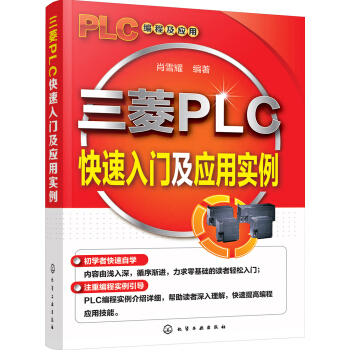
![中华人民共和国电力行业标准(DL/T 5369-2016):电力建设工程工程量清单计算规范 火力发电工程 [Standard Method of Measurement for Thermal Power Generation Project] pdf epub mobi 电子书 下载](https://pic.windowsfront.com/12204850/59479641N6ab5345e.jpg)
![中华人民共和国电力行业标准(DL/T 5745-2016):电力建设工程工程量清单计价规范 [Code of Bills of Quantities and Valuation for Electric Power Construction Works] pdf epub mobi 电子书 下载](https://pic.windowsfront.com/12204888/59479642N2a95afe8.jpg)


![新英汉汽车技术词典(第3版) [A new English-Chinese dictionary of automotive engineering: revised third edition] pdf epub mobi 电子书 下载](https://pic.windowsfront.com/12212968/594b745bN0be50075.jpg)
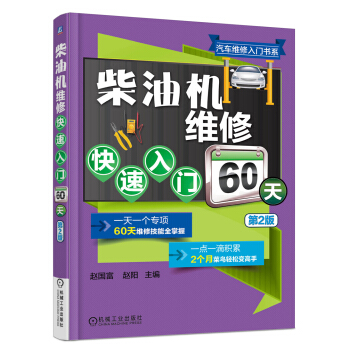

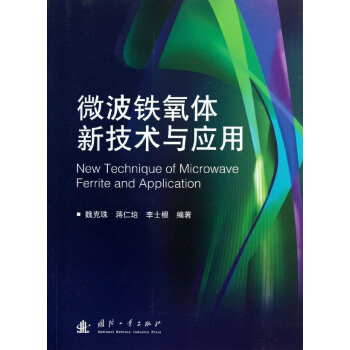
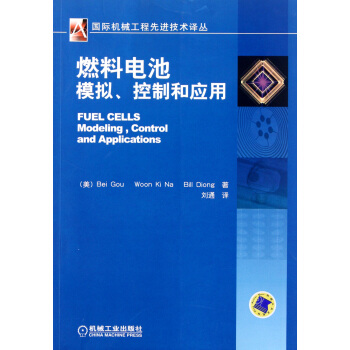
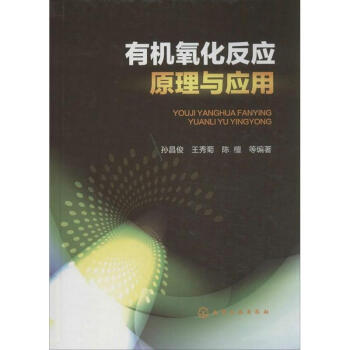
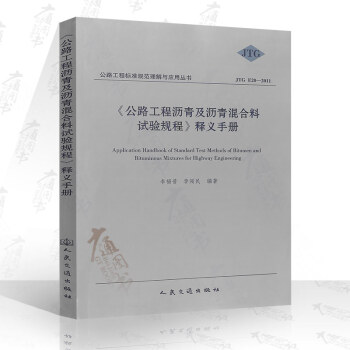
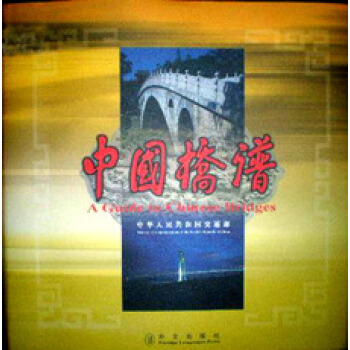
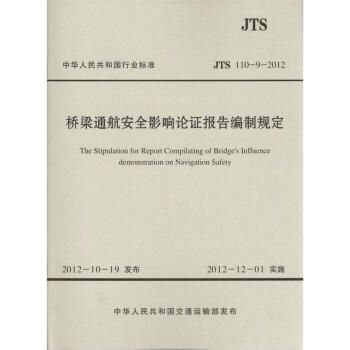
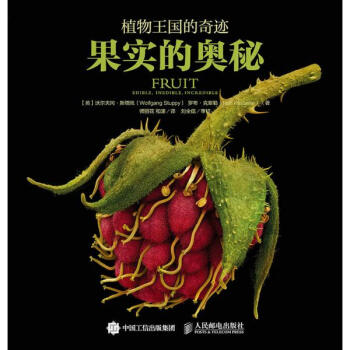
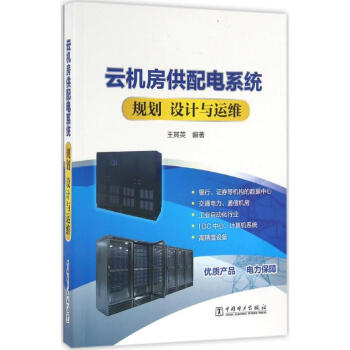
![水利水电[ 地基处理+土石方+堤防工程 ]单元工程施工质量验收评定表实例及填表说明(共三 pdf epub mobi 电子书 下载](https://pic.windowsfront.com/10468682044/5b14b527N0724ad3f.jpg)
